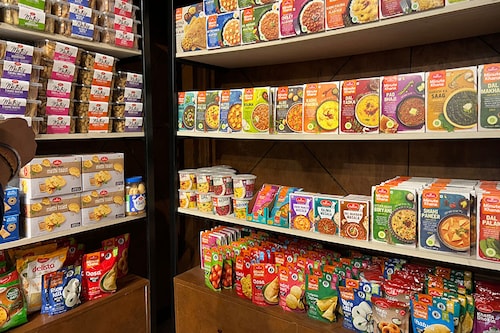Explained: Why PE giants are in a battle to get a piece of Haldiram's
The sweets and savouries maker makes for an ideal investment with its robust financials, scale, and future potential for growth


[br]
Reportedly private equity (PE) giants Blackstone Inc, Temasek Holdings Ltd and Bain Capital are looking to buy a controlling stake in sweets-and-savouries maker Haldiram Snacks Foods Pvt Ltd—the combined snacks and foods business of the Delhi and Nagpur factions of the Agarwal family.
There are two large bids. One is the consortium led by PE fund Blackstone, which has teamed up with Abu Dhabi Investment Authority (ADIA) and Singapore sovereign wealth fund GIC for a bid to acquire up to 76 percent of the company, stated an Economic Times report. This would value the business at $8-8.5 billion (Rs 66,400-70,500 crore).
The other is Bain Capital along with Singapore’s Temasek. Reports suggest that Bain has been in discussions with the Nagpur and Delhi factions over the last several months as the family was finalising a pan-India restructuring plan. Haldiram Snacks declined to comment on these developments.
The buyout is conditional, based on the successful merger of the Nagpur and Delhi factions, which is still in progress. The merger plan was approved by the National Company Law Tribunal, and is expected to be completed in the next three to four months. The Competition Commission of India had approved the merger last April.
This isn"t the first time news reports of Haldiram"s selling out have surfaced. In September 2023, Tata Consumer was said to be in the race to buy a majority stake, a report that the company duly denied. "We categorically deny recent reports of a 51 per cent stake sale and wish to clarify that we are not engaged in any discussions with Tata Consumer Products," a company statement said. Months later, in January 2024, another report surfaced, only this time Haldiram"s was said to be on the other side—as a buyer, of Indore-headquartered Prataap Snacks. Not much came out of that either.
Haldiram Snacks’ history dates back to 1937, when Ganga Bishan Agarwal also known as Haldiramji, set up a small namkeen shop in Bikaner. Once the shop gained popularity, to further expand the business he sent his sons to different parts of India. That is how the various factions of the business were created—Nagpur, Delhi and Kolkata.
According to Euromonitor International, Haldiram"s has nearly a 13 per cent share in India"s snack market. Though the company started out as a namkeen business, it has diversified into other product categories—with over 100 products available in India. The group also has a presence in various countries including the United States of America and Europe.
It has manufacturing facilities in Noida, Uttar Pradesh, and Rudrapur, Uttarakhand and a captive solar plant in Hardoi, Uttar Pradesh. Also, multiple restaurants including in National Capital Region, Uttar Pradesh, Punjab and Haryana are being operated under different group companies.
According to a report published by market research company IMARC Group, the Indian snacks market size was Rs 42,694.9 crore in 2023 and is expected to reach Rs 95,521.8 crore by 2032, exhibiting a growth rate (CAGR) of 9.08 percent during the forecast period.
The FY24 revenue of the combined snacks business is expected to be Rs 14,500 crore with an EBITDA of Rs 2,300-2,500 crore, as per reports. The business has seen a compound annual growth rate of 18 percent in revenue over the past five years.
The packaged foods business contributes 85 percent to the group’s turnover, while the restaurant business contributes 15 percent, states a CRISIL rating report (February 2024). And the salted snack segment is the biggest driver for Haldiram’s. “Close monitoring of procurement, cost and working capital has helped maintain healthy operating efficiency, reflected in return on capital employed (RoCE) of over 15 percent in the past three fiscals. Furthermore, the group’s working capital cycle is efficiently managed, as reflected in historically healthy receivables and inventory of 7-9 days and 22-24 days respectively," added the report. The group is likely to continue benefitting from its cost-effective and established sourcing strategy for raw materials, as well as its strong distributor network.
Evidently, Haldiram’s is not only financially attractive but also has a lot of scale as compared to many competitors given how unorganised the market is in India.
So why is Haldiram’s looking to sell its controlling stake? The founding family is reportedly looking to merge its snacks business, and hive off the restaurant chain that they will retain. Reports suggest that the next generation of the Agarwal family wants to pursue other interests.
First Published: May 17, 2024, 16:36
Subscribe Now